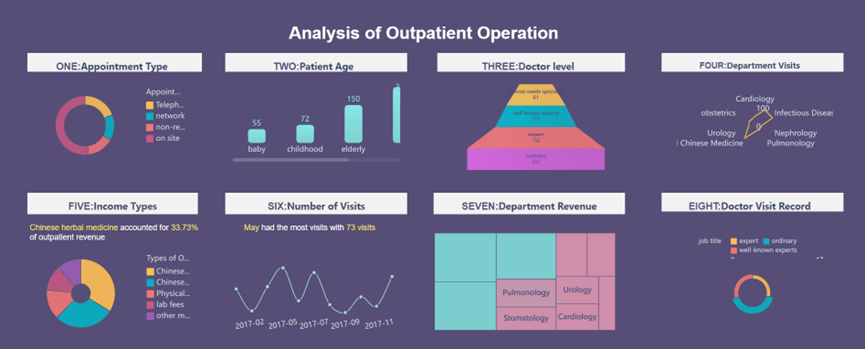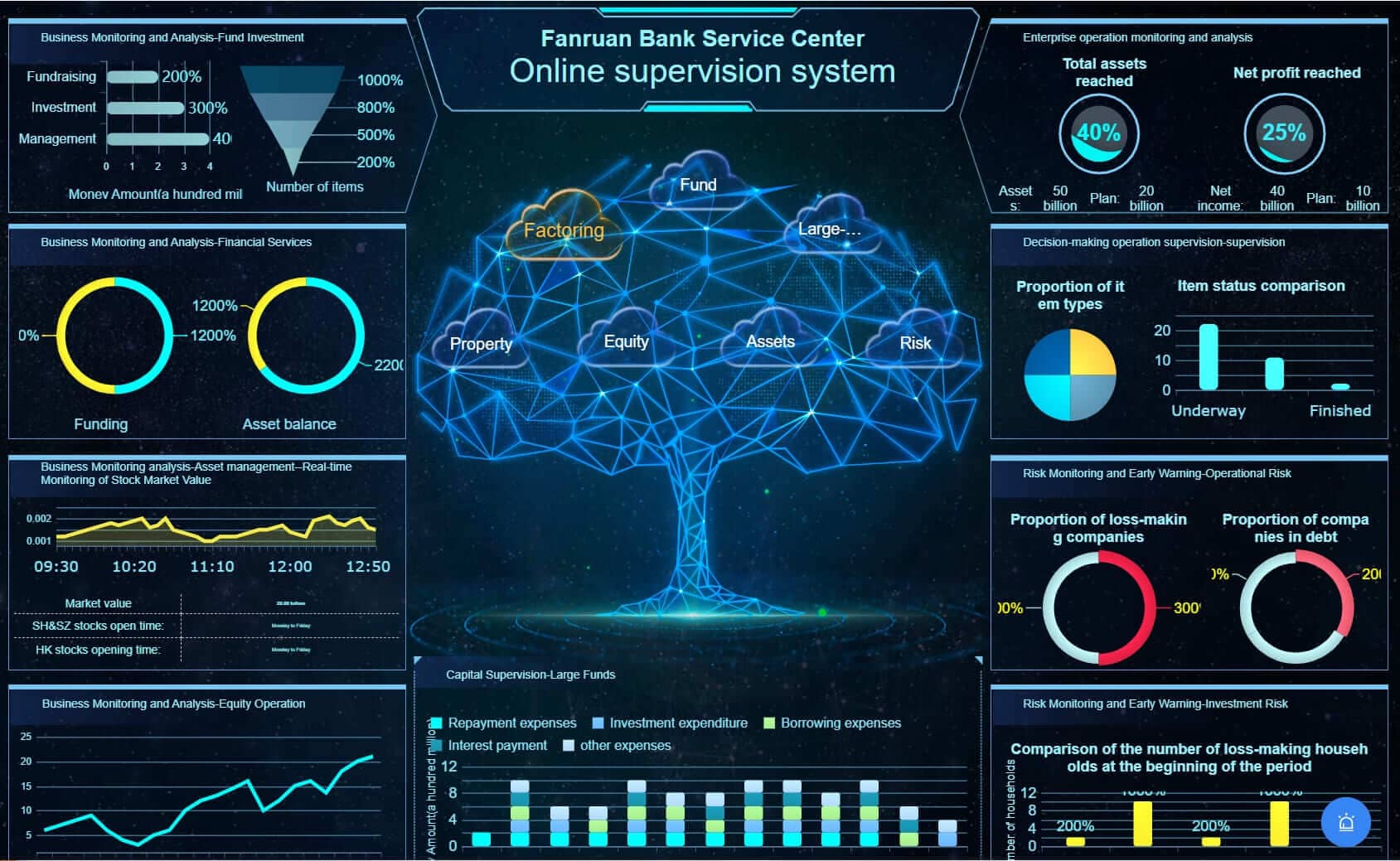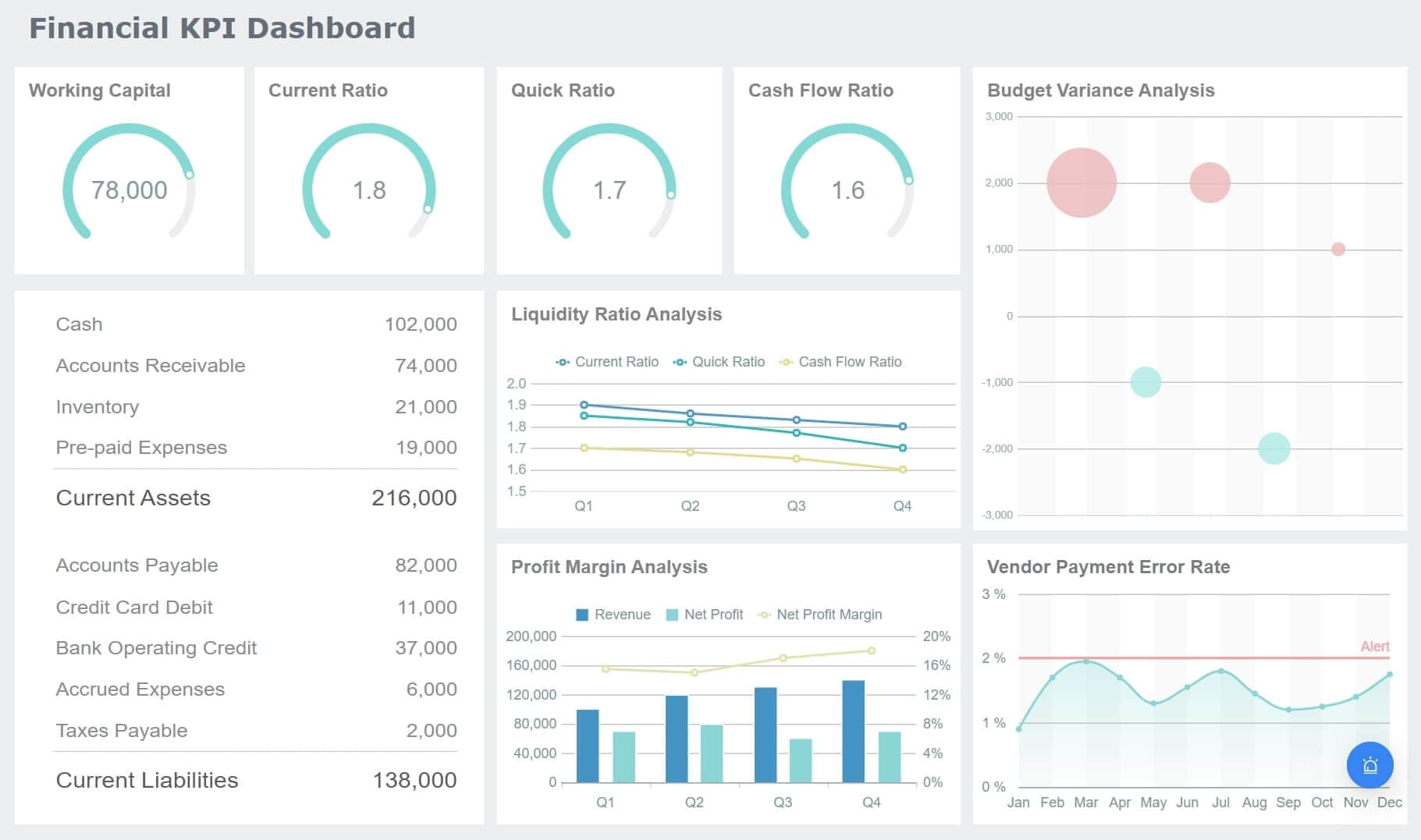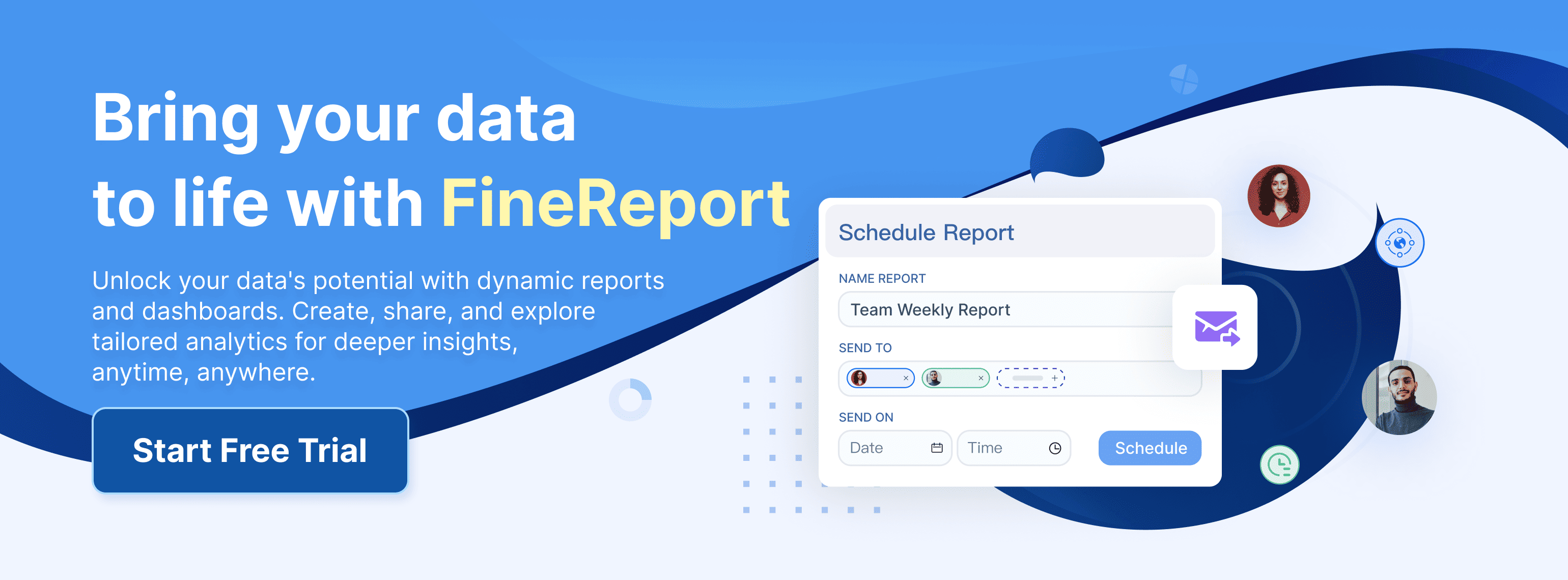

Data Discovery empowers you to explore and analyze data from various sources, uncovering hidden insights that drive innovation and efficiency. In today's data-driven world, its importance has soared, with 58 percent of businesses utilizing it by 2016. This trend is expected to grow as new data creation reaches over 180 zettabytes by 2025. Tools like FineDataLink, FineReport, and FineBI enhance this process, enabling rapid adaptation to market changes and providing a competitive edge. By leveraging Data Discovery, you can streamline operations and make informed, strategic decisions.
Defining Data Discovery
What is Data Discovery?
Data discovery involves exploring and analyzing data from various sources to uncover hidden insights. It empowers you to identify patterns, trends, and relationships within your data. This process helps you make informed decisions and drive strategic growth.
Key components of data discovery
Data discovery consists of several key components:
- Data Collection: Gathering data from multiple sources.
- Data Integration: Combining data into a unified view.
- Data Analysis: Using tools to identify patterns and insights.
- Data Visualization: Presenting data in an easily understandable format.
These components work together to provide you with a comprehensive understanding of your data.
Differences between data discovery and data analysis
While data discovery and data analysis may seem similar, they serve different purposes. Data discovery focuses on exploring and identifying patterns within data. It helps you uncover hidden insights. Data analysis, on the other hand, involves examining these insights to make informed decisions. In essence, data discovery is the first step in the data analysis process.
Historical Context of Data Discovery
Evolution of data discovery
Data discovery has evolved significantly over the years. Initially, it relied on manual processes and simple tools. With the advent of computers, data discovery became more efficient. Computers enabled the storage of vast amounts of data and faster search capabilities. This evolution has continued with the development of advanced data discovery tools.
Impact of technological advancements
Technological advancements have greatly impacted data discovery. The rise of artificial intelligence (AI) has enhanced data discovery by automating tasks and providing advanced analytics. AI enables intelligent exploration, allowing you to analyze data more efficiently. As data continues to grow exponentially, the need for faster and more sophisticated data discovery tools becomes urgent. These tools help you understand customers, products, and processes better, leading to improved decision-making.
Importance of Data Discovery
Enhancing Business Strategies
Data discovery plays a pivotal role in shaping effective business strategies. By leveraging data discovery, you can enhance your decision-making process and gain a competitive edge in the market.
Data-driven decision making
Data discovery empowers you to make informed decisions by providing access to comprehensive data insights. It allows you to explore and analyze data systematically, uncovering hidden patterns and trends. This process enables you to identify opportunities and make strategic choices that align with your business goals. With data-driven decision making, you can respond swiftly to market changes and optimize your operations for better outcomes.
Competitive advantage
In today's fast-paced business environment, gaining a competitive advantage is crucial. Data discovery equips you with the tools and knowledge to stay ahead of the competition. By analyzing data from various sources, you can identify emerging trends, understand customer preferences, and tailor your products or services accordingly. This proactive approach not only enhances customer experiences but also drives product innovation. As a result, you can position your business as a leader in the industry, attracting more customers and increasing your market share.
Improving Operational Efficiency
Data discovery is not just about strategy; it also significantly improves operational efficiency. By streamlining processes and reducing costs, you can achieve higher productivity and profitability.
Streamlining processes
Data discovery helps you identify inefficiencies within your operations. By analyzing data, you can pinpoint bottlenecks and areas for improvement. This insight allows you to streamline processes, eliminating unnecessary steps and optimizing workflows. As a result, you can enhance productivity and ensure that your resources are utilized effectively. With streamlined operations, you can deliver products or services faster and more efficiently, meeting customer demands with ease.
Reducing costs
Cost reduction is a key benefit of data discovery. By analyzing data, you can identify cost-saving opportunities and make informed decisions to optimize your budget. Data discovery enables you to track expenses, monitor resource allocation, and identify areas where costs can be minimized. This proactive approach helps you allocate resources more efficiently, reducing waste and maximizing profitability. By leveraging data discovery, you can achieve sustainable cost savings and improve your bottom line.
The Data Discovery Process

Data Collection
Data collection forms the foundation of the data discovery process. It involves gathering data from various sources to create a comprehensive dataset for analysis.
Identifying data sources
To begin, you must identify the data sources relevant to your objectives. These sources can include databases, spreadsheets, cloud storage, and even social media platforms. By pinpointing these sources, you ensure that you have access to the necessary information for your analysis.
Data gathering techniques
Once you've identified your data sources, you can employ various techniques to gather the data. These techniques may include manual data entry, automated data extraction, or using APIs to pull data directly from online platforms. The goal is to compile a dataset that is both accurate and comprehensive, setting the stage for effective data gathering techniques.
Data Analysis
Data analysis is the next step in the data discovery process. It involves examining the collected data to uncover patterns, trends, and insights that can inform decision-making.
Analytical tools and software
To analyze your data effectively, you can utilize a range of analytical tools and software. Tableau, for instance, offers a user-friendly drag-and-drop interface that transforms raw data into visually appealing dashboards. Power BI provides robust business analytics capabilities, allowing you to visualize and share insights from diverse data sources. TIBCO Spotfire and IBM Cognos Analytics offer comprehensive suites for data exploration and analysis, making them suitable for complex tasks across various industries. These tools empower you to make sense of your data and communicate your findings effectively.
Interpreting data insights
Interpreting data insights is crucial for deriving value from your analysis. By examining the visualizations and reports generated by your analytical tools, you can identify key patterns and trends. This interpretation helps you understand the implications of your data and guides you in making informed decisions. Whether you're identifying customer preferences or optimizing operational processes, the insights gained from data analysis can drive strategic growth and efficiency.
Methods of Data Discovery
Manual Data Discovery
Manual data discovery involves traditional methods where you explore and analyze data without the aid of advanced technology. This approach requires you to manually sift through data, identify patterns, and draw insights.
Traditional methods
- Data Collection: You gather data from various sources, such as spreadsheets, databases, and reports. This step often involves manual data entry or data extraction.
- Data Analysis: You use basic tools like Excel or simple statistical software to analyze the data. This process requires a keen eye for detail and a strong understanding of the data's context.
- Data Visualization: You create charts and graphs manually to represent the data visually. This step helps you identify trends and patterns more easily.
Limitations and challenges
Manual data discovery presents several challenges:
- Time-Consuming: The process can be slow and labor-intensive, especially when dealing with large datasets.
- Prone to Errors: Manual data entry and analysis increase the risk of human error, which can lead to inaccurate insights.
- Limited Scalability: As data volumes grow, manual methods become less feasible, making it difficult to keep up with the pace of data generation.
Automated Data Discovery
Automated data discovery leverages machine learning and AI to streamline the process. This approach allows you to analyze data more efficiently and accurately.
Machine learning and AI applications
Automated data discovery uses advanced algorithms to:
- Scan and Identify Data: Software tools automatically scan and classify data across various storage systems and databases. This eliminates the need for manual intervention.
- Recognize Patterns and Relationships: Machine learning algorithms detect patterns and relationships within the data, providing deeper insights.
- Standardize Data Quality: Automated tools erase outliers, unify data formats, and detect null values, ensuring consistent data quality.
Benefits of automation
Automating data discovery offers numerous advantages:
- Increased Efficiency: Automation speeds up the data discovery process, allowing you to analyze data faster and more accurately.
- Enhanced Accuracy: By reducing human error, automated tools provide more reliable insights.
- Scalability: Automated data discovery can handle large datasets, making it suitable for organizations with growing data needs.
- Continuous Monitoring: Automated solutions offer continuous monitoring for privacy, compliance, and security, ensuring that your data remains protected.
By embracing automated data discovery, you can unlock the full potential of your data, driving innovation and efficiency within your organization.
Use Cases of Data Discovery

Healthcare Industry
Data discovery plays a crucial role in the healthcare industry. It enhances the accuracy of diagnoses, improves treatment effectiveness, and elevates patient care.
Patient data analysis
You can use data discovery to analyze patient data comprehensively. By examining medical records, lab results, and treatment histories, you gain insights into patient health trends. This analysis helps you identify potential health risks early, leading to timely interventions. As a result, you can improve patient outcomes and reduce hospital readmissions.

Predictive healthcare models
Data discovery enables you to develop predictive healthcare models. By analyzing historical data, you can forecast disease outbreaks and patient admissions. These models help you allocate resources efficiently and plan for future healthcare needs. Predictive analytics also supports personalized medicine, allowing you to tailor treatments to individual patients. This approach enhances patient satisfaction and optimizes healthcare delivery.
Retail Sector
In the retail sector, data discovery helps you understand customer behavior and manage inventory effectively.
Customer behavior analysis
You can leverage data discovery to analyze customer purchasing patterns and preferences. By examining sales data, social media interactions, and online reviews, you gain insights into customer behavior. This analysis allows you to tailor marketing strategies and improve customer engagement. As a result, you can increase customer loyalty and drive sales growth.
Inventory management
Data discovery aids in optimizing inventory management. By analyzing sales trends and demand forecasts, you can make informed decisions about stock levels. This approach helps you reduce excess inventory and minimize stockouts. Efficient inventory management ensures that you meet customer demands promptly, enhancing customer satisfaction and boosting profitability.
"Data discovery provides businesses with the tools, knowledge, and ability to analyze their data and uncover hidden insights that otherwise might have been lost."
By applying data discovery in these industries, you unlock valuable insights that drive innovation and efficiency.
Challenges in Data Discovery
Data Privacy Concerns
Data privacy remains a significant challenge in data discovery. As you navigate through vast amounts of data, ensuring privacy becomes crucial.
Regulatory compliance
You must adhere to various data protection regulations, such as the General Data Protection Regulation (GDPR). This regulation requires you to identify, document, and manage personal data within your organization's data landscape. Compliance involves locating personal data, assessing its processing, and implementing appropriate safeguards. Failure to comply can result in hefty fines and damage to your reputation.
Ethical considerations
Ethical considerations play a vital role in data privacy. You need to ensure that data collection and analysis respect individual privacy rights. Transparency in how you use data builds trust with your customers. By prioritizing ethical practices, you demonstrate a commitment to protecting personal information and maintaining integrity in your data discovery efforts.
Data Quality Issues
Ensuring high-quality data is essential for effective data discovery. Poor data quality can lead to inaccurate insights and misguided decisions.
Ensuring data accuracy
Data accuracy is critical for reliable analysis. You must implement robust data validation processes to ensure that your data is correct and up-to-date. Regular audits and checks help identify discrepancies and maintain data integrity. By prioritizing accuracy, you enhance the reliability of your data-driven insights.
Overcoming data silos
Data silos present a significant challenge in data discovery. When data is stored in separate systems or departments, it becomes difficult to access and integrate. You need to break down these silos to create a unified view of your data. Implementing data integration solutions, like FineDataLink, can help you consolidate data from various sources. This approach ensures that you have a comprehensive dataset for analysis, enabling you to uncover valuable insights and drive strategic growth.
Future of Data Discovery
Emerging Trends
Integration of IoT and Big Data
The integration of the Internet of Things (IoT) with big data is transforming how you interact with data. IoT devices generate vast amounts of data every second. This data, when combined with big data analytics, offers you real-time insights into various processes. For instance, in manufacturing, IoT sensors can monitor equipment health, predicting failures before they occur. This proactive approach minimizes downtime and enhances productivity. By leveraging IoT and big data, you can optimize operations and improve decision-making.
Advancements in AI and Machine Learning
Artificial intelligence (AI) and machine learning (ML) are revolutionizing data discovery. These technologies enable you to analyze complex datasets quickly and accurately. AI algorithms can identify patterns and trends that might be invisible to the human eye. Machine learning models learn from data, improving their accuracy over time. This capability allows you to make predictions and automate decision-making processes. As AI and ML continue to evolve, they will play an even more significant role in data discovery, providing you with deeper insights and enhancing your strategic capabilities.
Predictions for the Next Decade
Increased Reliance on Data Discovery
In the coming decade, you will likely rely more on data discovery to drive business success. As data volumes grow, traditional methods of analysis will become less effective. Data discovery tools will become essential for extracting valuable insights from vast datasets. You will use these insights to make informed decisions, optimize operations, and gain a competitive edge. The ability to discover and act on data-driven insights will become a critical factor in your organization's success.
Innovations in Data Processing
Innovations in data processing will shape the future of data discovery. New technologies will enable you to process data faster and more efficiently. For example, quantum computing holds the potential to revolutionize data processing by solving complex problems in seconds. Additionally, edge computing will allow you to process data closer to its source, reducing latency and improving real-time decision-making. These advancements will empower you to harness the full potential of your data, driving innovation and efficiency across your organization.
Role of FanRuan in Data Discovery
FanRuan plays a pivotal role in enhancing data discovery through its innovative tools. These tools streamline data integration, reporting, and analytics, empowering you to make informed decisions and drive business growth.
FineDataLink for Data Integration
FineDataLink serves as a comprehensive data integration platform. It simplifies the process of consolidating data from various sources, ensuring that you have a unified view of your data.
Real-time data synchronization
With FineDataLink, you can achieve real-time data synchronization. This feature allows you to access the most current data, enabling you to respond swiftly to market changes. By synchronizing data in real-time, you ensure that your analysis is based on accurate and up-to-date information.

ETL/ELT capabilities
FineDataLink offers robust ETL/ELT capabilities. These features streamline data processing, allowing you to transform raw data into valuable insights efficiently. By automating these processes, FineDataLink reduces manual effort and enhances data quality.

FineReport for Reporting and Visualization
FineReport provides powerful tools for creating dynamic reports and visualizations. It enables you to present data in a visually appealing format, making it easier to interpret and share insights.
Creating dynamic reports
With FineReport, you can create highly formatted and dynamic reports. The software's drag-and-drop interface simplifies report generation, allowing you to customize reports to meet your specific needs. This flexibility ensures that you can communicate your findings effectively.

Enhancing data insights
FineReport enhances data insights by integrating with FineDataLink. This integration allows for flexible ETL and ELT data development, ensuring higher data quality. By leveraging these capabilities, you can uncover deeper insights and make more informed decisions.
FineBI for Self-Service Analytics
FineBI empowers business users with self-service analytics capabilities. It enables you to explore and analyze data independently, without relying on IT specialists.

Empowering business users
FineBI empowers you to connect, analyze, and share data across your organization. Its user-friendly interface makes data analysis accessible to everyone, regardless of technical expertise. By democratizing data access, FineBI fosters a data-driven culture within your organization.
Facilitating informed decision-making
FineBI facilitates informed decision-making by providing a comprehensive data analytics platform. It integrates with FineDataLink, enabling flexible ETL and ELT data development. This integration ensures that you have access to high-quality data, allowing you to make strategic decisions with confidence.
More About Data Discovery
Common Questions
How does data discovery differ from data mining?
Data discovery and data mining both involve analyzing data, but they serve different purposes. Data discovery focuses on exploring data to uncover patterns and insights. It helps you understand what data exists and how it can be used strategically. Data mining, on the other hand, involves using algorithms to extract patterns from large datasets. It often requires more technical expertise and aims to predict future trends based on historical data. While data discovery provides a broad overview, data mining delves deeper into specific patterns.
What industries benefit most from data discovery?
Many industries gain significant advantages from data discovery. In healthcare, it improves patient care by analyzing medical records and predicting health trends. Retailers use it to understand customer behavior and optimize inventory. Financial services rely on data discovery for risk management and fraud detection. Manufacturing benefits from process optimization and predictive maintenance. Essentially, any industry that deals with large volumes of data can leverage data discovery to enhance decision-making and operational efficiency.
Expert Insights
Tips for effective data discovery
To maximize the benefits of data discovery, follow these tips:
- Define Clear Objectives: Start with specific goals. Know what you want to achieve with your data analysis.
- Choose the Right Tools: Select tools that align with your needs. Consider factors like ease of use, scalability, and integration capabilities.
- Ensure Data Quality: High-quality data leads to accurate insights. Regularly validate and clean your data to maintain its integrity.
- Foster a Data-Driven Culture: Encourage data literacy within your organization. Empower employees to explore and analyze data independently.
- Stay Updated: Keep abreast of the latest trends and technologies in data discovery. Continuous learning enhances your ability to leverage data effectively.
Resources for further learning
Expand your knowledge of data discovery with these resources:
- Books: "Data Science for Business" by Foster Provost and Tom Fawcett offers insights into data-driven decision-making. "Storytelling with Data" by Cole Nussbaumer Knaflic teaches effective data visualization techniques.
- Online Courses: Platforms like Coursera and edX offer courses on data analysis and visualization. Consider courses like "Data Science Essentials" or "Introduction to Data Analytics."
- Webinars and Workshops: Attend webinars hosted by industry experts. Workshops provide hands-on experience with data discovery tools.
- Blogs and Articles: Follow blogs like "Towards Data Science" or "Data Science Central" for the latest trends and insights in data discovery.
By utilizing these resources, you can deepen your understanding of data discovery and apply it effectively in your organization.
Data discovery plays a crucial role in your business success. It empowers you to uncover valuable insights, optimize operations, and make informed decisions. By adopting data discovery practices, you can rapidly adapt to market changes and gain a competitive edge. This process enhances customer experiences and drives product innovation. Embrace data discovery to transform raw data into actionable intelligence. Explore further learning opportunities to deepen your understanding and maximize the benefits of data discovery. Your journey towards data-driven excellence begins with taking the first step today.
FAQ
Data discovery aims to uncover valuable insights from your data. By exploring various data sources, you can identify patterns and trends that inform strategic decisions. This process empowers you to make data-driven choices that drive innovation and improve operational efficiency. As Reveal highlights, visual data discovery tools make this process intuitive, even for non-technical users, enabling rapid decision-making.
While both data discovery and traditional data analysis involve examining data, they serve different purposes. Data discovery focuses on identifying hidden patterns and insights within your data. It provides a broad overview of what data exists and how it can be strategically used. Traditional data analysis, on the other hand, delves deeper into specific datasets to draw conclusions and make predictions. Qlik emphasizes the importance of visual representation in data discovery, which helps you recognize patterns that might not be evident through analytics tools alone.
Data discovery plays a crucial role early in the data lifecycle. As new data sources are integrated into your existing systems, data discovery helps you identify and analyze this data effectively. This process ensures that you have a comprehensive understanding of your data landscape, enabling you to make informed decisions. Immuta notes that data discovery occurs as new data sources are onboarded, highlighting its importance in maintaining an up-to-date [
](https://www.fanruan.com/en/glossary/big-data/data-ecosystem).
Businesses across various industries can leverage data discovery to enhance their operations. By uncovering actionable insights, you can optimize processes, improve customer experiences, and drive growth. For instance, in retail, data discovery helps you understand customer behavior and tailor marketing strategies accordingly. In healthcare, it aids in predicting patient trends and improving treatment outcomes. Ultimately, data discovery equips you with the tools to make strategic decisions that align with your business objectives.
Several tools facilitate the data discovery process, each offering unique features to suit different needs. Visual data discovery tools, such as FineReport and FineBI, provide user-friendly interfaces that simplify data exploration. These tools enable you to create dynamic reports and visualizations, making it easier to interpret and share insights. By choosing the right tools, you can streamline your data discovery efforts and unlock the full potential of your data.
Continue Reading About Data Discovery
2025 Best Data Integration Solutions and Selection Guide
Explore top data integration solutions for 2025, enhancing data management and operational efficiency with leading platforms like Fivetran and Talend.
Howard
Dec 19, 2024
2025's Best Data Validation Tools: Top 7 Picks
Explore the top 7 data validation tools of 2025, featuring key features, benefits, user experiences, and pricing to ensure accurate and reliable data.
Howard
Aug 09, 2024
2025 Data Pipeline Examples: Learn & Master with Ease!
Unlock 2025’s Data Pipeline Examples! Discover how they automate data flow, boost quality, and deliver real-time insights for smarter business decisions.
Howard
Feb 24, 2025
Best Data Integration Vendors for Seamless Workflows
Discover the top 20 data integration vendors of 2025 for seamless workflows. Compare tools like Talend, AWS Glue, and Fivetran to optimize your data processes.
Howard
Jan 22, 2025
Best Data Integration Platforms to Use in 2025
Explore the best data integration platforms for 2025, including cloud-based, on-premises, and hybrid solutions. Learn about key features, benefits, and top players.
Howard
Jun 20, 2024
Best Data Management Tools of 2025
Explore the best data management tools of 2025, including FineDataLink, Talend, and Snowflake. Learn about their features, pros, cons, and ideal use cases.
Howard
Aug 04, 2024




